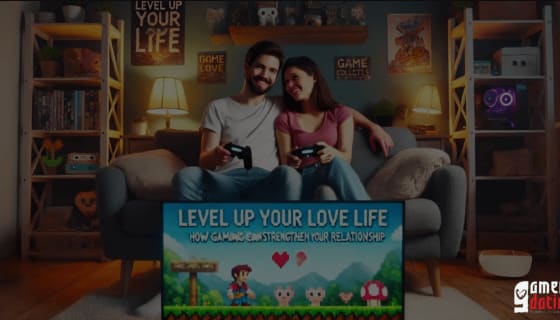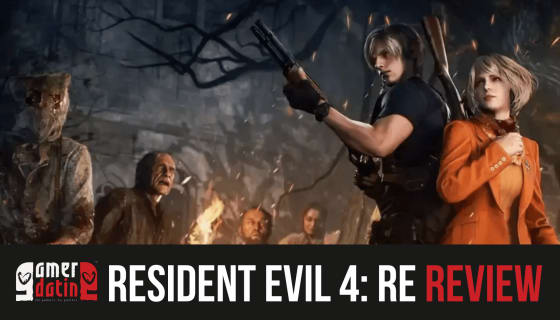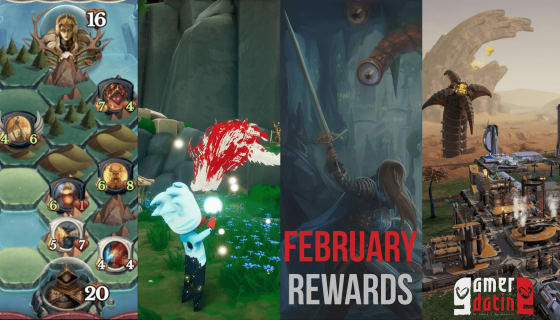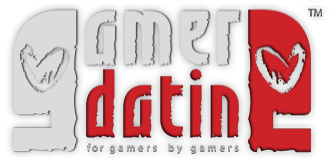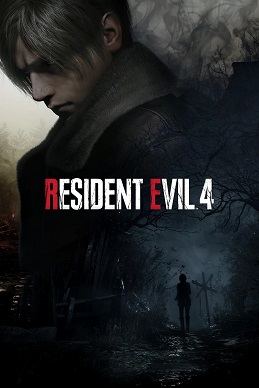The best video game of a generation remade for modern audiences.
Resident Evil 4 is commonly agreed to be one of the best survival horror games of all time.
Originally launching in 2005, this classic action horror experience has been remastered many times, and ported to more consoles than I care to list, but it has taken until now for Capcom to fully remake it. I’ve never played the original beyond its opening few hours, so I approached the remake with no pre-conceived notions. For those who care about such things, I played through Resident Evil 4 (2023) (RE4R) on the Xbox Series X.
Graphically, anyone who has played any of the recent Resident Evil titles will know what to expect. The RE Engine continues to be a reliable way of merging photorealistic textures and lighting in the environment with slightly less photorealistic character models. Don’t misunderstand me, the models are good, and the attention to detail on Leon’s skin goes beyond anything it needed to, but the people never seem to quite match the world perfectly.
Something that did bug me was that, as far as I could tell, all the female character models seemed to have pore-less, airbrushed skin, while Leon had easy to see pores. A small thing, but annoying nonetheless as we move away from the sexualisation of female characters.
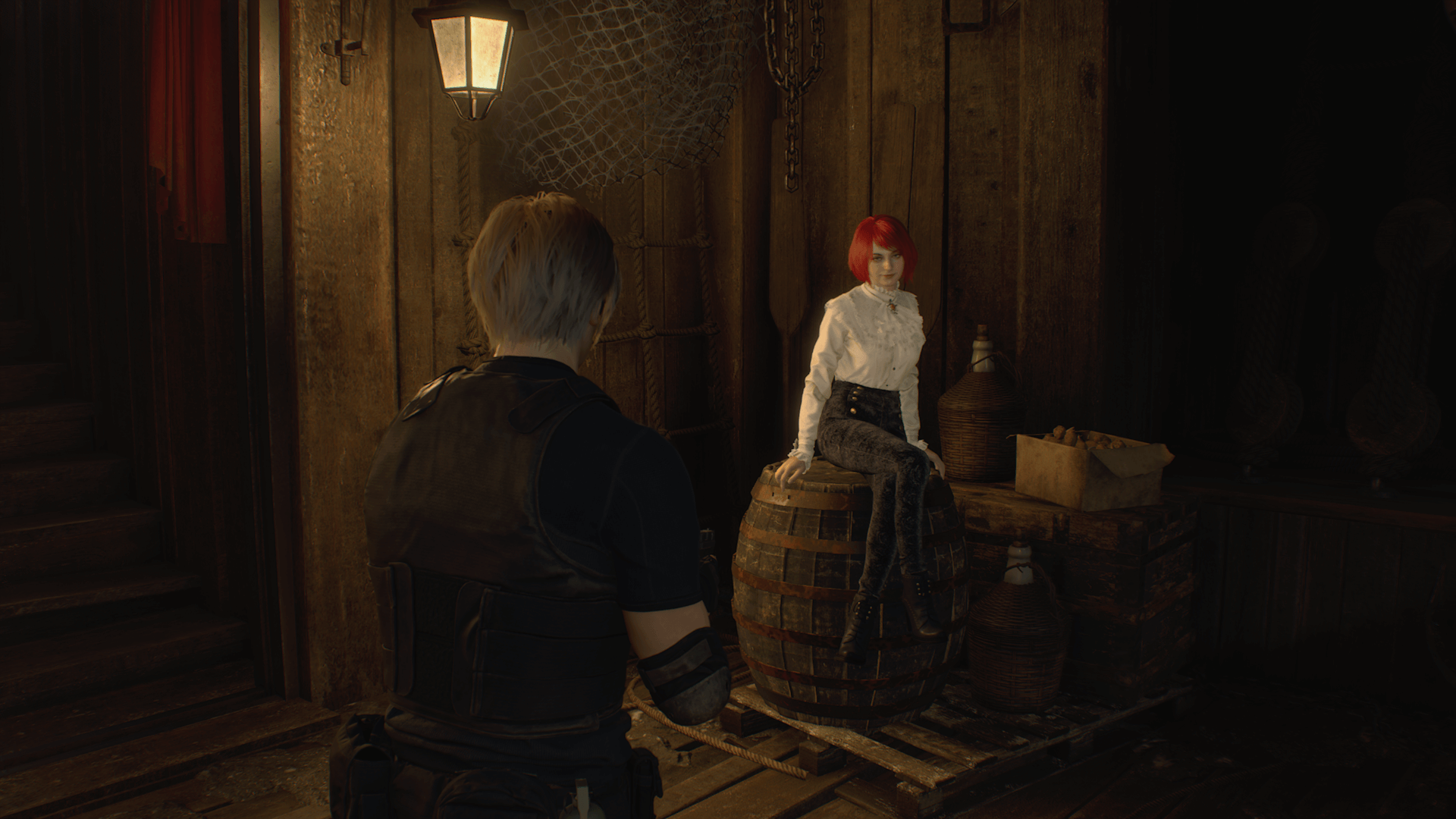
It’s refreshing to see a female character whose alternate costumes aren’t revealing.
As with every Resident Evil title since 2019’s Resident Evil 2 remake, the attention to detail shown in the textures and character models extends to the sound design. Nothing here is over the top, each sound and voice line is crisp, easily distinguished, and feels a part of the world. Guns are satisfying to fire, the environmental sound effects are a quiet counterpoint that provide an almost contemplative backdrop for Leon’s journey, and the score is there to highlight and supplement what is happening as it fades in and out to accompany climactic moments.
That minimalism extends to other aspects of the game’s design as well. Interactive objects don’t shine or flicker as they have in other games in the series, although they do appear on the map if you miss them with your initial visual pass, and small objects like eggs, crossbow bolts, and money pouches are highlighted in the game world with a small pillar of light because they’re difficult to see otherwise.
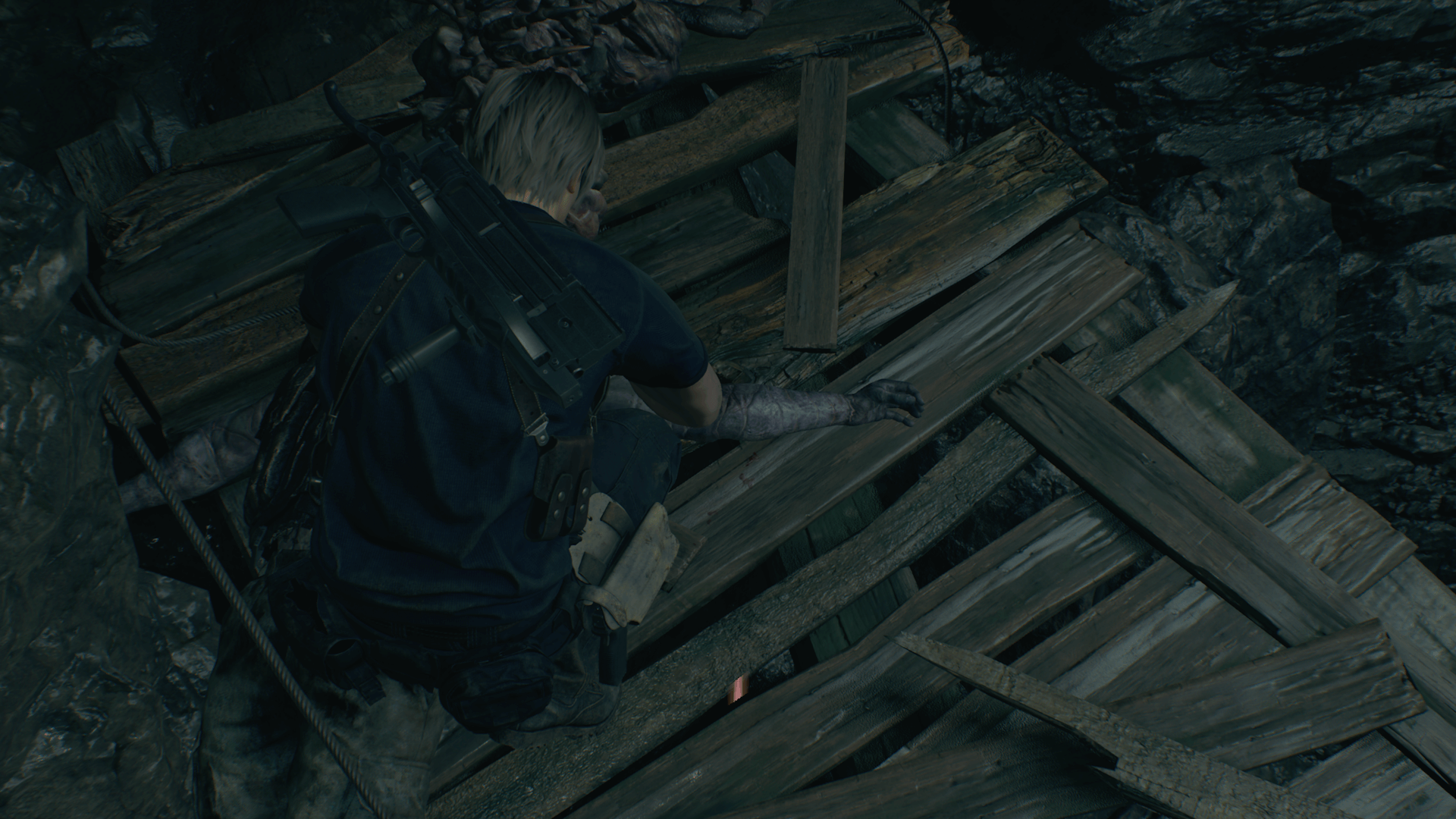
Thank you for showing me where my crossbow bolts are with a red column of light, game. I appreciate it.
Yellow paint is splashed liberally throughout the game world to indicate breakable objects and serves as a gentle, if incongruous, prompt during the game’s many puzzle sections. None of these are terribly difficult, but the yellow paint does rather stand out and provide more of a hint than might be needed. The HUD itself is tiny, and can’t be scaled, but the ‘Evade’ prompt that flashes in response to some attacks appears in the centre of the screen, making itself difficult to miss.
Happily, objects vital to side-quests are equally as difficult to miss.
All these factors weave together to make a game that is all about style. The original game was a departure from the series’ survival horror roots, and that has been continued here. Darkened caves, hallways that echo only with the sound of Leon’s footsteps, and the creeping dread of something being around the next corner are still here, but are all mixed in with open areas that invite a stealth-based approach or a more bombastic section that is all about the gunplay.
Where the Resident Evil 2 and 3 remakes were all about the personal horror of being trapped in Raccoon City, this game knows that its hero has survived worse than what this small village can throw at him and embraces that.
Survival horror and action have always been uneasy friends.
The minimalism inherent throughout everything discussed so far combines into a fractured whole as the game progresses. I cannot speak for the original, although I imagine it likely faced a similar problem, but the merging of survival horror and cinematic action doesn’t work very well. At least, not as it is presented here.
The slow, methodical controls of the previous remakes mesh poorly with the focus on gunplay, larger open spaces, and an increased number of enemies. At several points in the game, Leon endures horde events where the goal is simply to survive long enough that a timer runs out or all the enemies are killed. These sections grate against the more measured pace of the horror aspects that the game indulges in, a situation worsened by a few stealth sections that feel tacked on for the sake of gameplay variation.
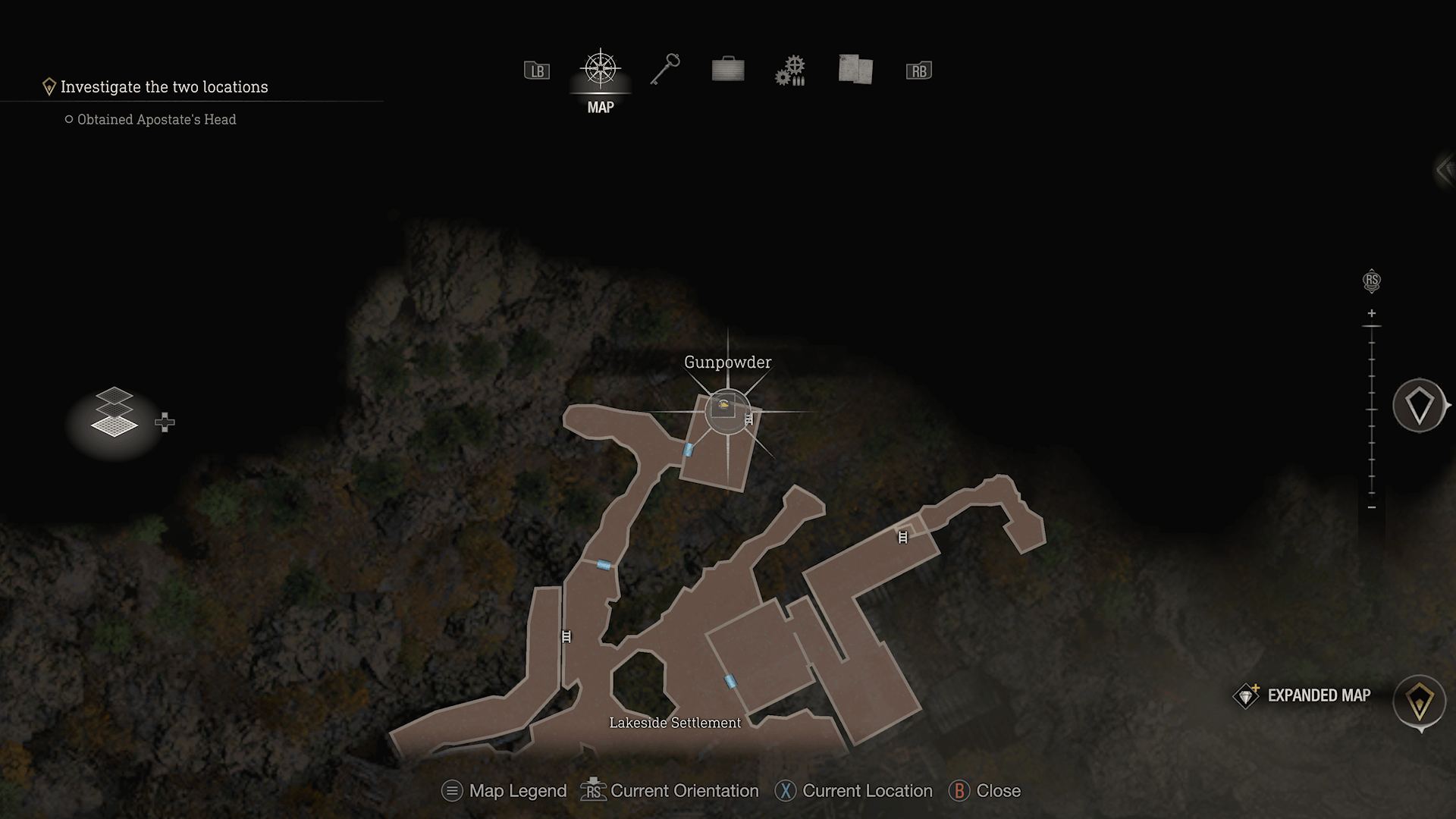
Items that you miss in the environment are revealed on your map.
And where there is stealth, there are stealth kills. Among Leon’s arsenal are a variety of knives and a bolt-thrower (crossbow). The latter functions as a silent gun that deals less damage than most of the other guns in the game, but has ammunition that can be recovered from corpses or turned into a proximity mine. The former are found throughout the environment as each use of a knife, including to instantly escape a grapple or dispatch a downed enemy, reduces its durability.
Leon has a personal knife that can be upgraded and repaired – other knives can be used to craft crossbow bolts – but the entire system can leave you without a defensive item if you are grabbed or without easy means to kill a hostile NPC mutating on the ground, if you aren’t careful. On paper, it sounds like an excellent balancing mechanic, in practice is feels like it was thrown into the game as something else to spend your in-game currency on.
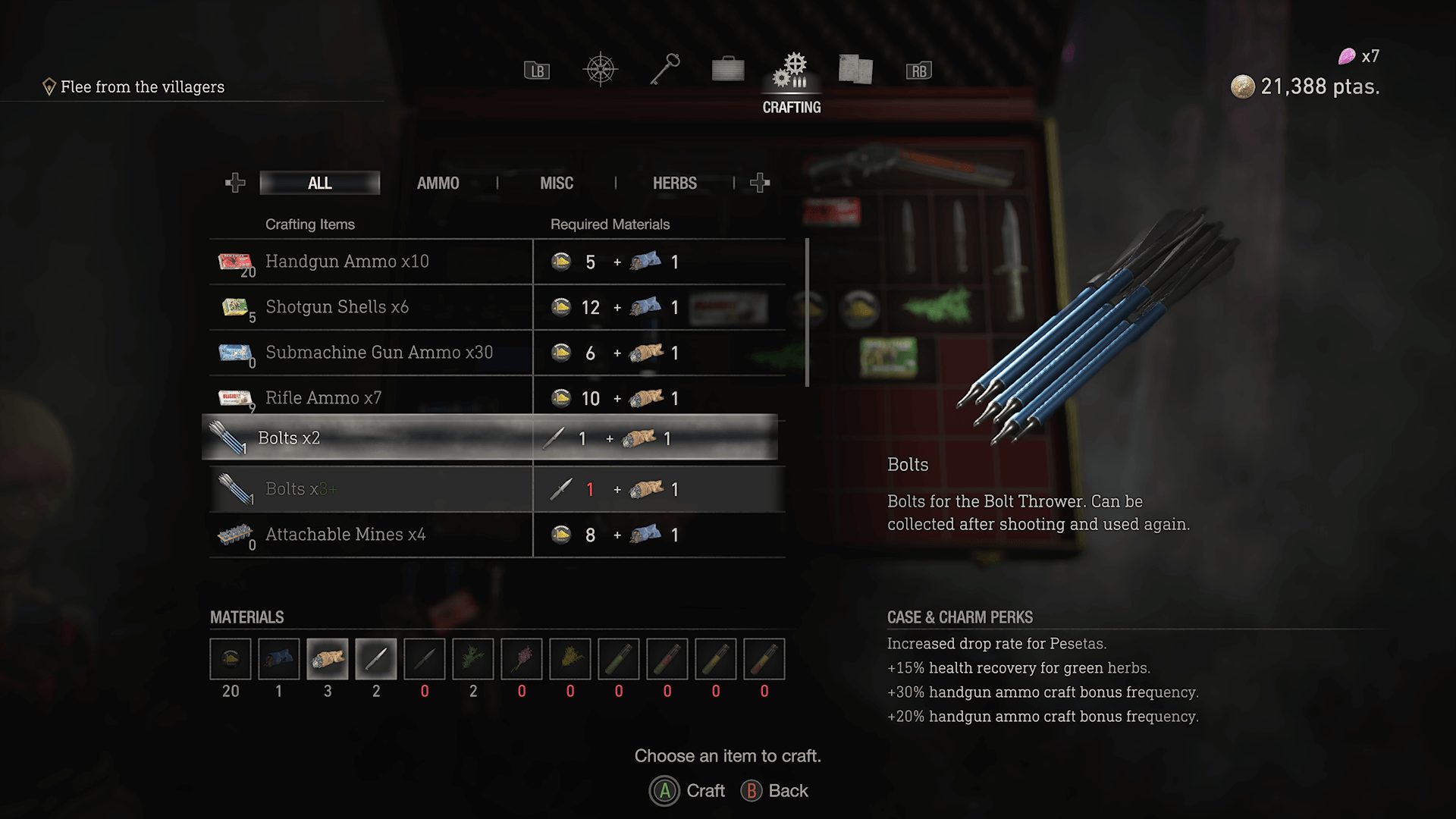
The number of bolts you can make depends on the durability of the knife being sacrificed.
And you’ll end up with a lot of that for one simple reason: you can’t buy ammunition. The currency is used to buy, and upgrade, weapons, as well as a small selection of other items including crafting resources. Crafting items is easy, although each resource takes up space in your limited inventory, but feels superfluous and the ammo droughts that you will encounter regularly throughout the game feel designed to force you into crafting ammunition.
I understand that being able to buy ammunition would detract from the horror atmosphere, but there are few things more tedious than reloading a checkpoint – because you don’t have the right ammunition to clear an action-heavy section of the game – for the third or fourth time. I don’t mind the crafting in the other recent Resident Evil games, but it just doesn’t feel like it fits properly with RE4R’s emphasis on cinematic set pieces and willingness to throw larger numbers of enemies at you.
This eclectic mash up of genres and gameplay styles extends to the story as well. Characters are introduced and then killed almost immediately afterwards despite reading as Tyrant-style threats, the game’s third act is infamous and remains a bizarre counterpoint of bullet-sponge induced frustration to the first two acts, and very little time is spent on character motivations. RE4R has far more characters with intelligence than the previous remakes and I can’t help but feel that the development team were constrained by the limits of the original in terms of what they could and could not do.
Ganados: smart enough to lay traps, not smart enough to avoid them.
This is all without even mentioning Leon’s (the main character) complete lack of agency. He bounces from plot point to plot point, being told what to do and never being given a chance to choose anything. Something that is mirrored in the forced stealth and horde sections that are clearly designed to be climactic moments but fall flat as they have no real emotional weight to them.
Certainly, I’m led to believe that the plot this time around is slightly more cohesive, and several characters more fleshed out, but there’s a definite feel that each speaking character is simply there to progress the plot, rather than be a whole person with their own motivations and desires. For what it’s worth, the plot itself is serviceable but nothing spectacular.

Not everything is as easy to find as the Merchant’s side quests.
I would be remiss if I didn’t briefly discuss the game’s numerous text files. As with previous titles in the series, these are found throughout the game world and add flavour and lore to it, without being required to understand the main plot. Attempts at fleshing out characters are made through these collectibles, but they aren’t terribly successful. They can be read at any time, but I doubt you’ll need to re-read any of them.
How long is Resident Evil 4? Nearly too long.
Due to my extremely methodical playstyle, I took over 20 hours to beat the main game, but most people will probably manage it in around 15 or so. I was entertained for most of that time, but there were a few sections that made me consider abandoning my playthrough: mostly where the game clearly intended me to use stealth, but I am happy I stuck with it, despite the frustration.
This being a Resident Evil game, however, completing the main story is but the tip of the iceberg. A large number of unlockable cosmetics, a handful of new weapons, and an unneeded number of 3D models and concept art pieces are bought from the in-game store with points earned through in-game challenges, and any of the 19 side quests that you miss the first time through can be finished on subsequent New Game Plus playthroughs as the side quest list completely refreshes every time.
An impressive array of unlockables awaits!
Veterans of the series will be happy to know that, as time of writing, the Mercenaries mode has been added to the game, for those of you who enjoy wave-based horde gameplay.
‘Forced’ stealth sections and ammo droughts weren’t my only problems with the game though. The PC version, I’ve discovered, is missing some important key binding information. On the Xbox, for example, you can press X to bring up a chart detailing a money multiplier when adding gems to certain items to increase their worth, or to bring up a weapon comparison screen. This information is present on the PC version, but nowhere does it tell you to press Shift to access it.
Almost as invisible is the parry prompt that allows you to momentarily stun enemies with your knife. The UI is tiny to begin with – and cannot be resized – and the prompt gives a minute flash for a split second. This wouldn’t be all that much of a problem except an entire boss fight is based around parrying an enemy’s attacks.
As a side note, the approach to accessibility here is a mixed bag. Plenty of options exist to make the game more accessible, but the controls themselves, as well as the lack of option to scale the UI or increase the parry prompt window let the game down.
The rise of pre-set accessibility options makes me happy.
Worst of all, at the time of writing, this full-priced premium game has microtransactions.
Historically, Capcom has added DLC that provides all the unlockables for a small fee, which I have no problem with as a disabled gamer who will never be able to beat the game’s hardest difficulty. The problem is that the microtransactions aren’t as comprehensive. Each provides the unique upgrade for a single weapon, of which there are 29 in the game, and you can buy them singly, or in packs of three or five. At £50 to begin with, asking for an additional approximately £30 to unlock upgrades that can be gained with the in-game currency comes across as predatory.
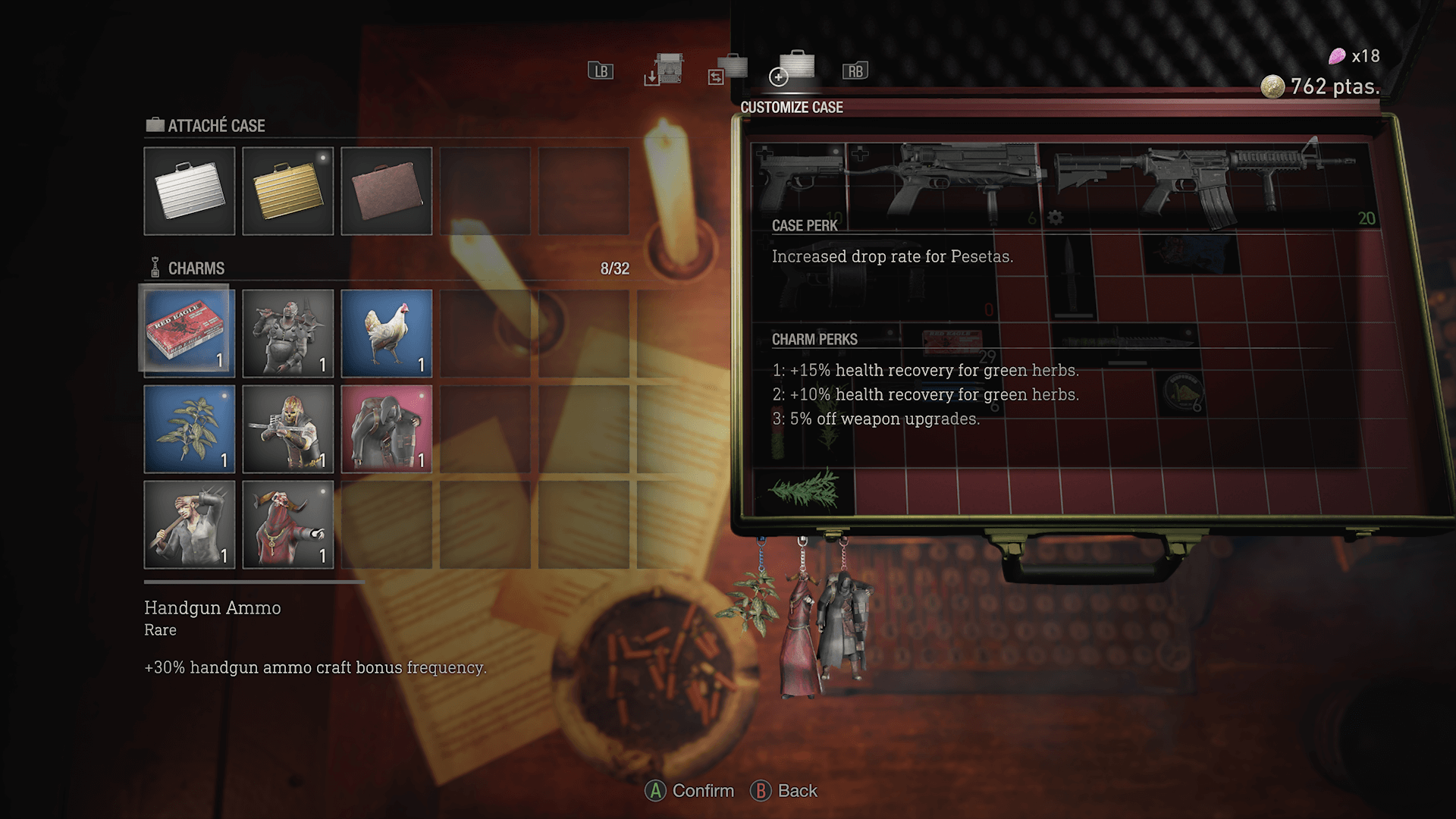
I thought the gacha system of case charms for minor bonuses might have been simplified by micro-transactions post-launch. Each charm is found in a capsule unlocked by exchanging silver and gold tokens.
Is Resident Evil 4 worth it?
For my part, there is fun to be had here. Most of the game is enjoyable, the environments are a delight to look at, and explore, and the puzzles are fun without being too difficult. I encountered no gameplay breaking glitches or bugs during my playthrough and had a solidly average experience that was drenched in style.
But those niggles that do exist aren’t insignificant. I can count the numbers of times I have wanted to abandon a game due to disliking it on one hand and RE4R very nearly joined that number with its forced stealth sections – although you can get around most of them with a scoped rifle or by stunning enemies before they can raise the alarm by shooting them repeatedly with the bolt-thrower – and the incredibly small UI with its near unnoticeable prompts for a seemingly key feature.
How are things like this still happening in a AAA game from 2023?
There is, obviously, a whole discussion we could have about the nature of video game remakes and how far they can stray from the original game, but for me, RE4R is held back by its adherence to a well-regarded game. The blending of survival horror and action never quite works, and the game just feels like it was made to please fans of the original without adding too much into the mix. That’s no bad thing, it just means I’m not the target audience.
Overall, I’m happy to give Resident Evil 4 7/10. It’s an average game whose high points barely outweigh its low, and whose irritating design choices most likely stem from its connection to the past.
If only the attention to detail here extended to every facet of the game.

